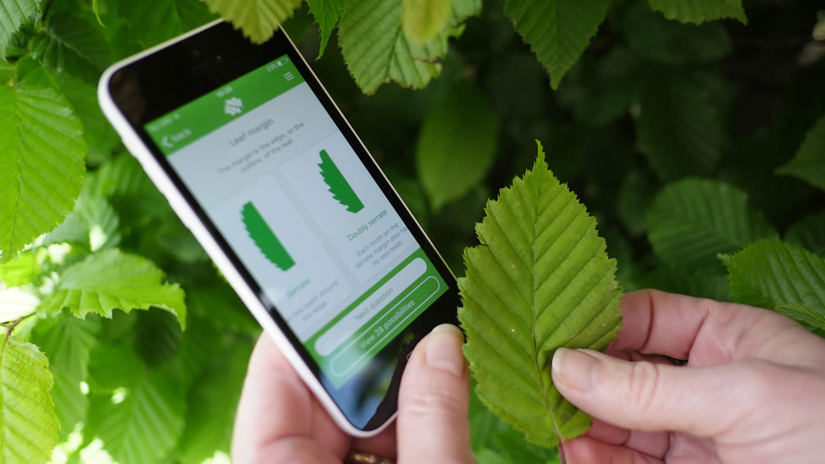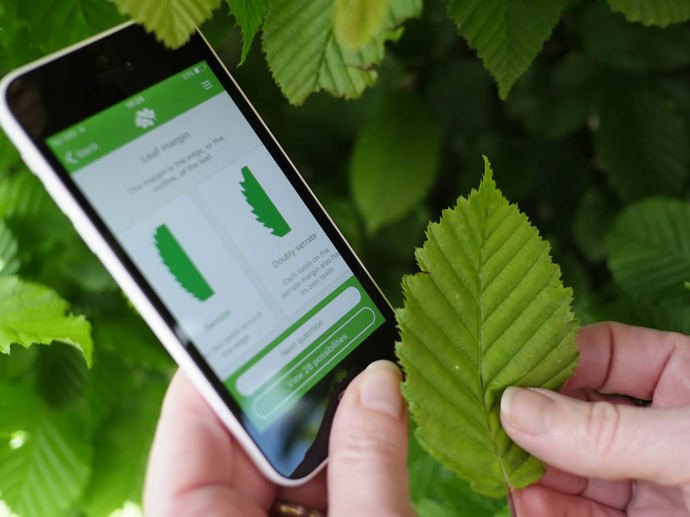Common names: aspen, quaking aspen, common aspen, European aspen
Scientific name: Populus tremula
Family: Salicaceae
Origin: native
Trembling, fluttering and shimmering in the slightest breeze. The rippling leaves of this beautiful tree give it its name: quaking aspen.
Common names: aspen, quaking aspen, common aspen, European aspen
Scientific name: Populus tremula
Family: Salicaceae
Origin: native
Also known as quaking aspen, this is a beautiful tree with shimmering foliage. Mature trees grow to 25m. Older trees may be covered with lichen, which gives the trunk a black appearance, and the bark is grey and often pitted with diamond-shaped pores, called lenticels. The uppermost branches are sometimes bent over horizontally. Twigs are dark brown, slender and shiny.
Look out for: leaf stalks (petioles) which are flattened.
Identified in winter by: its twigs which are very knobbly, especially older ones. Buds spiral around and are closely pressed to the twig.

Credit: Daniel Romani / WTML
Round with large, irregular, blunt teeth. The leaf stalks are flattened and flexible near the leaf blade, which is why the leaves flutter so easily. Young leaves are of a coppery colour before becoming green, then turn a vibrant yellow or occasionally red before falling in autumn.

Credit: ImageBROKER / Alamy Stock Photo
Aspens are dioecious, meaning that their male and female flowers (catkins) – which appear in March and April – grow on different trees.
Male catkins (pictured here) are brown and around 12cm long, turning yellow with pollen when ripe. Female catkins (below) start out green before developing into fluffy fruits.

Credit: Floral Images / Alamy Stock Photo
Once pollinated by the wind, female catkins ripen to release tiny, fluffy seeds in summer.
Aspen can also propagate itself by using suckers – clone shoots produced from the tree's root system.


Download our free Tree ID app for Android and iPhone to identify the UK's native and non-native trees. It's an A-Z tree guide in your pocket.
Native to cool regions in the northern hemisphere, aspens grow in clonal colonies, particularly in ancient woods and heaths and also on well-drained soil near rivers. It flourishes in open sunlight and moist soil and is intolerant of shade. In the UK, it is most common in the north-west of Scotland.

Aspen trees attract a wide variety of insects, including two species of gall midge and the aspen hoverfly which feeds on microorganisms in dead aspen wood. These insects are food for birds and ladybirds. Deadwood cavities provide nesting opportunities for birds, such as the woodpecker. Aspen is a preferred species for beavers, which are native to the UK.
The scientific name tremula means ‘to tremble' and refers to the way the leaves flutter and move in the breeze.
A crown made of aspen leaves was said to give its wearer the power to visit and return safely from the Underworld. Aspen crowns found in ancient burial mounds may have been included to allow the spirits of the deceased to be reborn. Aspis, the aspen's Greek name, means shield, which was one of the many traditional uses of its wood.
In Celtic mythology, the visual effect of an aspen trembling in the wind was said to be the tree communicating between this world and the next.

Aspen wood is white, soft, lightweight but fairly strong and was used for making oars and paddles, surgical splints and wagon bottoms. Its low flammability means it’s a good choice for matches and paper, while the shredded wood – sometimes called excelsior (wood wool) – is used for packing, stuffing and animal bedding.
Poplar species such as aspen can be prone to a variety of fungal diseases, including cankers, leaf rusts and poplar scab.